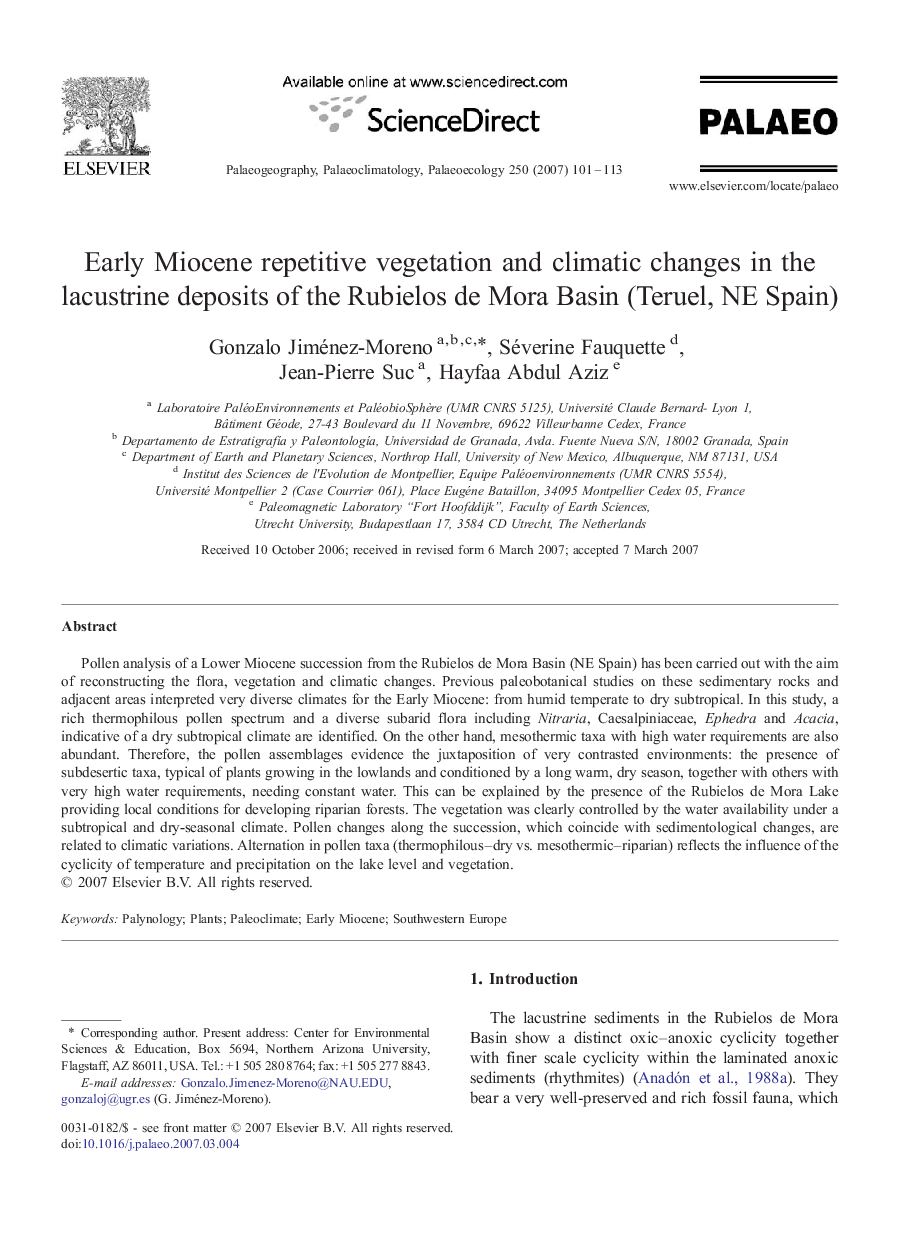| Article ID | Journal | Published Year | Pages | File Type |
|---|---|---|---|---|
| 4469005 | Palaeogeography, Palaeoclimatology, Palaeoecology | 2007 | 13 Pages |
Pollen analysis of a Lower Miocene succession from the Rubielos de Mora Basin (NE Spain) has been carried out with the aim of reconstructing the flora, vegetation and climatic changes. Previous paleobotanical studies on these sedimentary rocks and adjacent areas interpreted very diverse climates for the Early Miocene: from humid temperate to dry subtropical. In this study, a rich thermophilous pollen spectrum and a diverse subarid flora including Nitraria, Caesalpiniaceae, Ephedra and Acacia, indicative of a dry subtropical climate are identified. On the other hand, mesothermic taxa with high water requirements are also abundant. Therefore, the pollen assemblages evidence the juxtaposition of very contrasted environments: the presence of subdesertic taxa, typical of plants growing in the lowlands and conditioned by a long warm, dry season, together with others with very high water requirements, needing constant water. This can be explained by the presence of the Rubielos de Mora Lake providing local conditions for developing riparian forests. The vegetation was clearly controlled by the water availability under a subtropical and dry-seasonal climate. Pollen changes along the succession, which coincide with sedimentological changes, are related to climatic variations. Alternation in pollen taxa (thermophilous–dry vs. mesothermic–riparian) reflects the influence of the cyclicity of temperature and precipitation on the lake level and vegetation.
